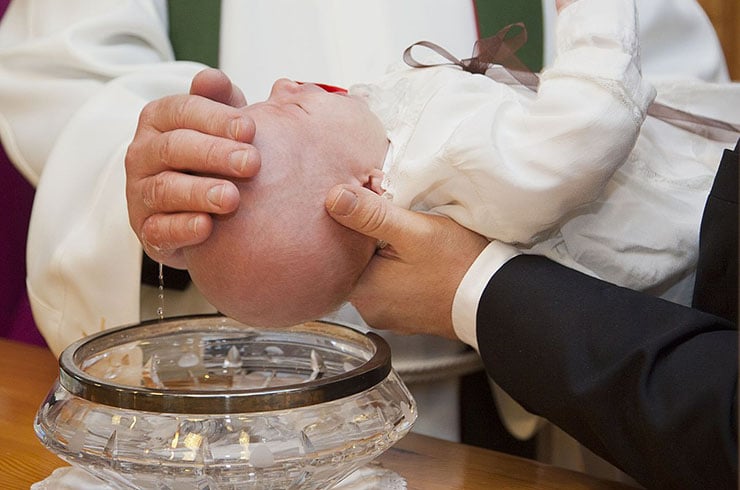The fight over abortion in America is as much a religious contest as a political one. Until the pro-life movement recognizes this, it will keep getting shocked by referendum results like those in Ohio last week, which planted a right to abortion in the state’s constitution.
Opponents of abortion are not theocrats; on the contrary, so devoted are they to the separation of faith and law that they think it would discredit the pro-life cause to tie it too closely to religion. The movement’s leaders prefer to argue from neutral premises acceptable even to secular liberals: objective science, they insist, proves a fetus is a human life.
Progressives often point to science as a moral authority, on questions ranging from climate change to gender and various disparate impacts and outcomes correlated with race. But this is philosophically naïve whether pro-lifers or progressives do it.
Even if science accurately describes a thing, it cannot say whether the phenomenon is good or bad; those judgments rely on prior moral commitments. This is where the pro-life movement meets defeat.
The moral assumptions of most pro-lifers are more religious than those of other Americans. That’s not a bad thing, but it suggests that to defeat abortion at the ballot box, pro-lifers ought to begin by getting more Americans to go to church.
Gallup’s 2023 survey of who identifies as pro-life or pro-choice tells the tale. “Pro-choice” self-identification leads in most categories: among all adults (52-44 percent), among women (55-41 percent), among whites (51-46 percent), and people of color (54-40 percent). Men are narrowly divided; Gallup has them favoring the pro-life label 48-47 percent.
But in the category of “religious service attendance,” pro-lifers predominate. Those who attend church weekly identify as pro-life 66-28 percent. Even those who attend less regularly, between weekly and monthly, favor the pro-life designation 56-41 percent. Among those who seldom or never attend, however, the balance is reversed: they identify as pro-choice 64-31 percent.
The difference is not down to mere physical presence in a church building—the point is that attending services regularly is a sign of strong religious convictions. The Catholic Church authoritatively teaches that abortion is a sin, and the more conservative Protestant denominations and Orthodox Jews broadly concur.
Of course, many people who belong to a religion don’t believe what it teaches, but these members tend not to be the ones filling the pews every Sunday. If more voters were like those who attend church regularly, referendums in red states like Ohio would be winnable for abortion opponents, and they would have a better chance in less Republican-leaning states, too.
But with an electorate composed of voters whose moral outlook is not shaped by religion, defeat is almost certain. Better communications strategies won’t help sell abortion bans to people who don’t already agree that abortion is wrong: it’s like trying to sell sirloin to vegans.
Pro-lifers are not the only ones who have this problem, of course. Libertarian conservatives are constantly disappointed to discover how persistent public demand for government services is. Progressives have their own frustrations with voters—especially those who continue to vote Republican, even for Donald Trump, despite being told that it’s immoral, deplorable, and undemocratic to do so.
Liberals have all the communications firepower of the mainstream media at their disposal, and plenty of billionaire backing, too, but they still can’t talk voters out of what millions of them already want. Efforts at persuasion aren’t futile, but they have to take account of the difference between what people already believe and what they would have to believe—what their core moral convictions would have to be—in order to embrace a pro-life, libertarian, or fully progressive agenda.
Family, church, school and college are the institutions that form moral commitments; we have a culture war because these institutions are on different sides. Families are disintegrating and schools are failing; the strongest religious institutions are generally conservative, while higher education is run by progressives.
So highly educated social liberals do battle with highly religious conservatives, as moral anarchy or mere utilitarianism prevails among the less educated and non-religious—which happens to be the kind of voter that makes Ohio a Trump state.
Neither cold scientific reason nor beautiful natural-law syllogisms made today’s pro-lifers pro-life: their churches did that. If the movement needs more voters, the obvious way to make them is the same way existing opponents of abortion were made.
A political party can’t do that, and expensive ad campaigns won’t. All a party can do is work with the material on hand: meeting voters where they are and getting the most pro-life (or libertarian, progressive or otherwise) results possible within an existing moral framework.
That’s not enough for those who want to save souls now—but the place where that happens is in the pews and the pulpit.
COPYRIGHT 2023 CREATORS.COM

Leave a Reply